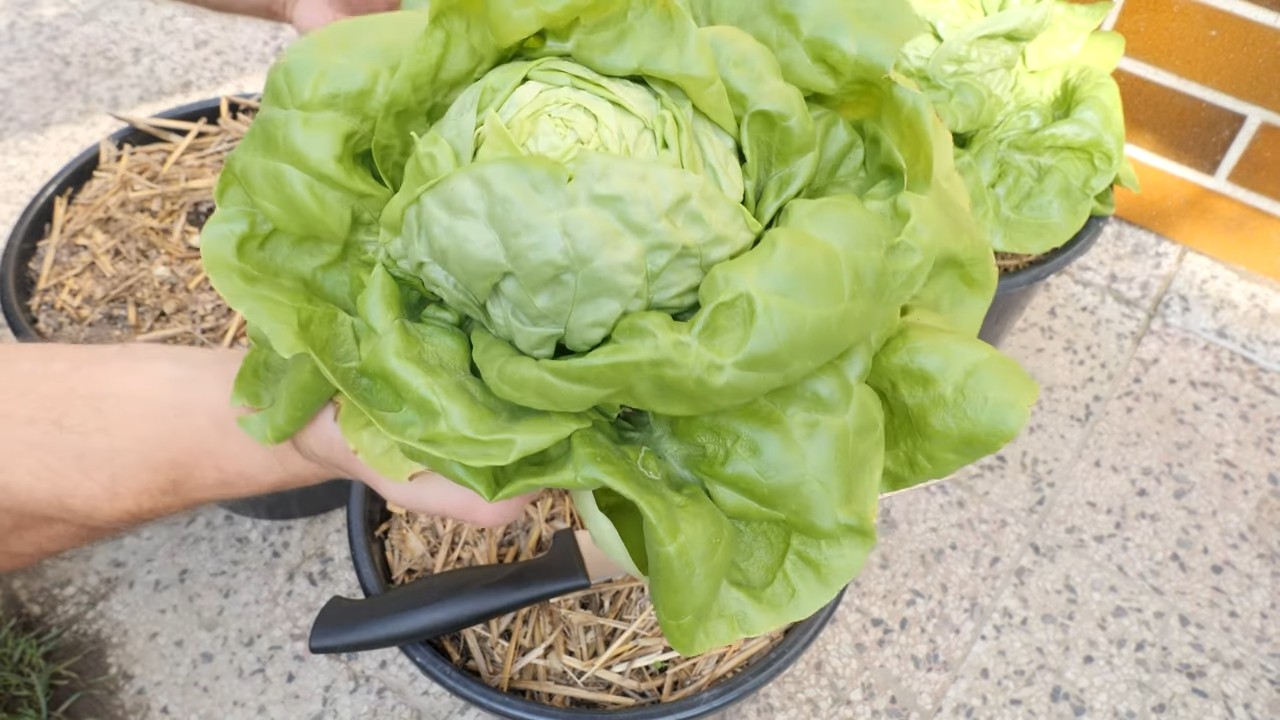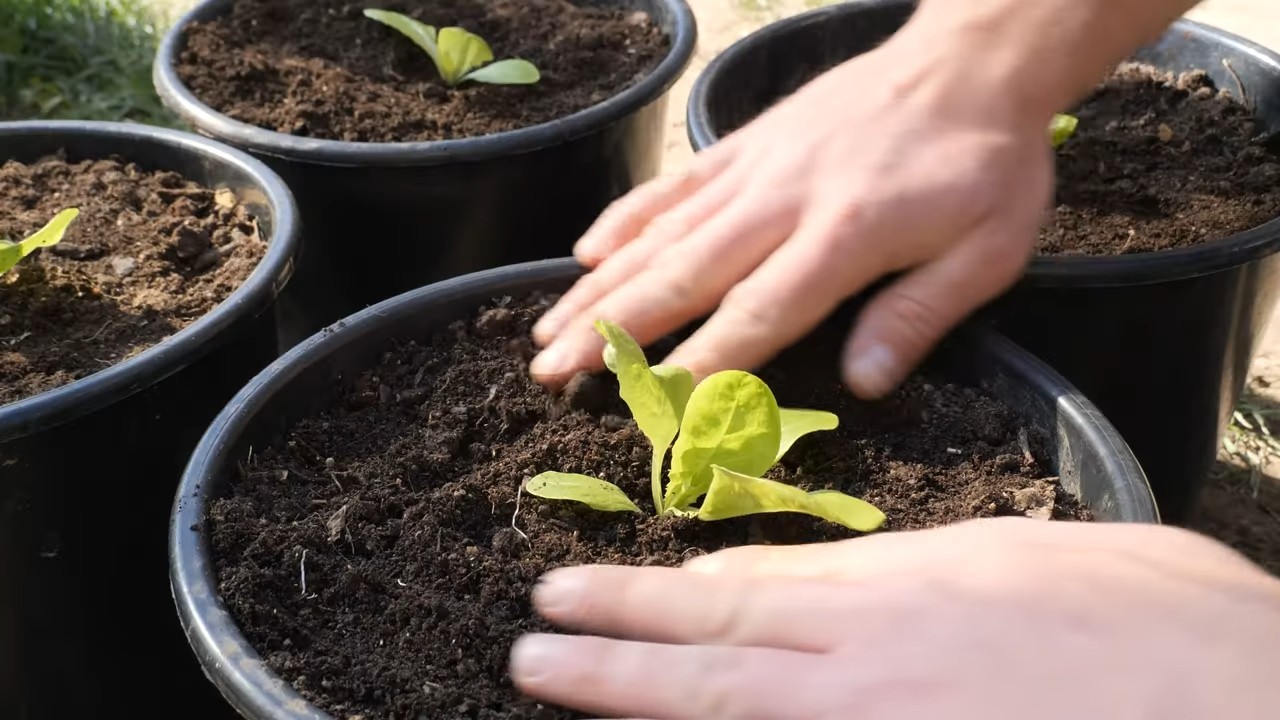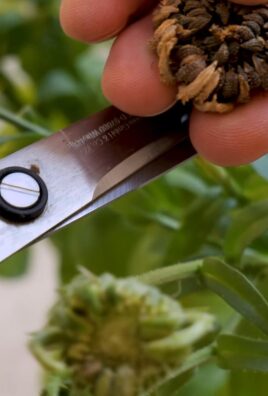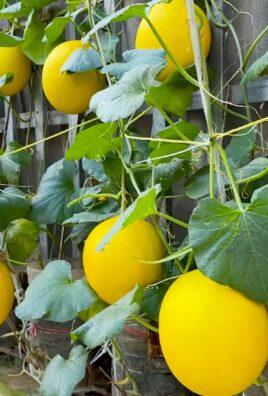Year Round Lettuce Growing: Imagine stepping outside your door, even in the dead of winter, and harvesting fresh, crisp lettuce for your salad. Sounds like a dream, right? Well, it doesn’t have to be! For centuries, gardeners have sought ways to extend their growing seasons, and the pursuit of fresh greens throughout the year is a tale as old as agriculture itself. From ancient Roman greenhouses to modern-day cold frames, the desire for year-round produce has driven innovation and ingenuity.
But why is year round lettuce growing so important? Let’s face it, store-bought lettuce can be expensive and often lacks the vibrant flavor and nutritional value of homegrown varieties. Plus, there’s nothing quite like the satisfaction of nurturing your own food from seed to table. This DIY guide is your passport to a continuous supply of delicious lettuce, regardless of the season. I’m going to share simple, effective tricks and hacks that will empower you to defy the weather and enjoy fresh salads all year long. Say goodbye to wilted, overpriced greens and hello to a thriving, homegrown lettuce patch!

DIY Year-Round Lettuce Growing: A Guide to Fresh Greens Anytime!
Okay, lettuce lovers, listen up! Are you tired of relying on the grocery store for your salad fix, especially when those prices skyrocket in the off-season? I know I am! That’s why I’m going to share my secrets to growing lettuce year-round, no matter where you live. It’s easier than you think, and the taste of homegrown lettuce is simply unbeatable.
Understanding the Basics: Lettuce and the Seasons
Lettuce is a cool-season crop, which means it thrives in temperatures between 60°F and 70°F. Hot weather makes it bolt (go to seed), resulting in bitter-tasting leaves. Cold weather can stunt its growth or even kill it. So, the key to year-round lettuce is to protect it from these extremes.
Here’s the general idea:
* Spring and Fall: These are the easiest times to grow lettuce outdoors. You’ll likely have ideal temperatures and plenty of sunlight.
* Summer: We need to provide shade and keep the soil cool.
* Winter: We need to provide protection from frost and potentially supplement with artificial light.
Choosing the Right Lettuce Varieties
Not all lettuce is created equal! Some varieties are more heat-tolerant, while others are more cold-hardy. Here are a few of my favorites for year-round growing:
* Heat-Tolerant: Black Seeded Simpson, Jericho, Nevada, Buttercrunch (somewhat). These varieties are slower to bolt in the summer heat.
* Cold-Hardy: Winter Density, Arctic King, Rouge d’Hiver. These can withstand light frosts and keep producing even in chilly weather.
* General Purpose: Romaine, Butterhead. These are good choices for spring and fall and can be adapted with protection.
The Year-Round Lettuce Growing System: A Breakdown
We’re going to use a combination of techniques to keep our lettuce happy all year long. This includes:
* Succession Planting: Planting new seeds every 2-3 weeks to ensure a continuous harvest.
* Container Gardening: Allows us to move our lettuce plants indoors or to sheltered locations as needed.
* Season Extension Techniques: Using row covers, cold frames, or greenhouses to protect plants from extreme temperatures.
* Indoor Growing: Utilizing grow lights to supplement sunlight during the winter months.
Getting Started: Planting Your First Lettuce Crop
Let’s get our hands dirty! This section covers the basics of planting lettuce, whether you’re starting from seed or using transplants.
1. Choose Your Container: I recommend using containers that are at least 6 inches deep and wide. This gives the lettuce roots plenty of room to grow. Make sure the container has drainage holes!
2. Prepare Your Soil: Use a high-quality potting mix that drains well. You can also amend your soil with compost for added nutrients. I like to mix equal parts potting mix, compost, and perlite for excellent drainage and aeration.
3. Sow Your Seeds (or Transplant):
* From Seed: Sprinkle lettuce seeds thinly over the surface of the soil. Cover them with a very thin layer of soil (about 1/4 inch). Gently water the soil.
* Transplants: Dig a hole in the soil that is slightly larger than the root ball of the transplant. Gently remove the transplant from its container and place it in the hole. Backfill with soil and water thoroughly.
4. Watering: Keep the soil consistently moist, but not soggy. Water when the top inch of soil feels dry to the touch. Avoid overhead watering, as this can lead to fungal diseases.
5. Location: Place your container in a location that receives at least 6 hours of sunlight per day. In the summer, you may need to provide some afternoon shade.
Summer Lettuce Survival: Beating the Heat
Summer is the biggest challenge for lettuce growers. Here’s how I keep my lettuce alive and thriving during the hottest months:
1. Provide Shade: This is crucial! You can use shade cloth, row covers, or even move your containers to a location that receives afternoon shade. I’ve even used an old umbrella in a pinch!
2. Water Deeply and Regularly: Lettuce needs consistent moisture in hot weather. Water deeply in the morning to allow the soil to dry out slightly before nightfall.
3. Mulch: Apply a layer of mulch around your lettuce plants to help retain moisture and keep the soil cool. Straw, wood chips, or even shredded leaves work well.
4. Choose Heat-Tolerant Varieties: As mentioned earlier, selecting the right varieties is key to summer success.
5. Watch for Bolting: Keep a close eye on your lettuce plants. If they start to bolt (send up a flower stalk), harvest the leaves immediately. Bolted lettuce will taste bitter. You can also try pinching off the flower stalk to prolong the harvest, but it’s usually best to start a new planting.
Fall and Winter Lettuce: Extending the Season
As the weather cools down, we can relax a little bit, but we still need to provide some protection to keep our lettuce growing.
1. Row Covers: These are lightweight fabric covers that you can place over your lettuce plants to protect them from frost and cold winds. They also help to retain heat.
2. Cold Frames: A cold frame is a simple, unheated structure that provides a sheltered environment for plants. You can build one yourself or purchase a pre-made kit.
3. Greenhouse: If you’re serious about year-round gardening, a greenhouse is a great investment. It provides the best protection from the elements and allows you to grow lettuce even in the coldest climates.
4. Move Indoors: If you’re growing lettuce in containers, you can simply move them indoors when the weather gets too cold. Place them near a sunny window or under grow lights.
5. Choose Cold-Hardy Varieties: Again, selecting the right varieties is important for winter growing.
Indoor Lettuce Growing: Bringing the Garden Inside
Growing lettuce indoors is a great way to enjoy fresh greens all winter long. Here’s what you need to know:
1. Grow Lights: Lettuce needs plenty of light to grow indoors. I recommend using LED grow lights, as they are energy-efficient and provide the right spectrum of light for plant growth. Place the lights about 6-12 inches above the plants.
2. Potting Mix: Use a high-quality potting mix that drains well.
3. Watering: Water when the top inch of soil feels dry to the touch. Be careful not to overwater, as this can lead to root rot.
4. Fertilizing: Fertilize your lettuce plants every 2-3 weeks with a balanced liquid fertilizer.
5. Air Circulation: Good air circulation is important to prevent fungal diseases. You can use a small fan to circulate the air around your plants.
6. Temperature: Keep the temperature between 60°F and 70°F.
Harvesting Your Lettuce
The best part! You can start harvesting lettuce leaves as soon as they are big enough to eat. Simply snip off the outer leaves, leaving the inner leaves to continue growing. This is known as “cut-and-come-again” harvesting.
* Loose-leaf lettuce: Harvest individual leaves as needed.
* Head lettuce: Harvest the entire head when it is firm and well-formed.
Troubleshooting Common Lettuce Problems
Even with the best care, you may encounter some problems when growing lettuce. Here are a few common issues and how to deal with them:
* Aphids: These tiny insects suck the sap from lettuce leaves. You can control them with insecticidal soap or by releasing beneficial insects like ladybugs.
* Slugs and Snails: These pests can damage lettuce leaves. You can control them with slug bait or by hand-picking them off the plants.
* Downy Mildew: This fungal disease causes yellow spots on lettuce leaves. You can prevent it by providing good air circulation and avoiding overhead watering. If you see signs of downy mildew, remove the affected leaves and spray the plants with a fungicide.
* Bolting: As mentioned earlier, bolting is when lettuce plants send up a flower stalk. This is usually caused by hot weather. To prevent bolting, provide shade and water deeply.
Succession Planting: Keeping the Lettuce Coming!
To ensure a continuous harvest of lettuce, it’s important to practice succession planting. This means planting new seeds every 2-3 weeks. This way, you’ll always have a supply of fresh lettuce ready to harvest. I usually start new seeds while my current crop is maturing. This way, I have transplants ready to go as soon as I harvest the old plants.
Final Thoughts: Enjoy Your Fresh, Homegrown Lettuce!
Growing lettuce year-round takes a little

Conclusion
So, there you have it! Mastering the art of year-round lettuce growing is not just a gardener’s dream; it’s an achievable reality with a little planning and the right techniques. We’ve explored how to extend your lettuce harvest far beyond the typical growing season, ensuring a constant supply of fresh, crisp greens for your salads, sandwiches, and culinary creations.
Why is this DIY trick a must-try? Because it empowers you to take control of your food source, reduce your reliance on store-bought produce (which can be expensive and less flavorful), and enjoy the unparalleled satisfaction of harvesting your own homegrown lettuce, even when the weather outside is frightful. Imagine the delight of serving a vibrant, fresh salad in the dead of winter, knowing that every leaf came from your own garden. That’s the power of year-round lettuce growing.
But the benefits extend beyond mere convenience. Growing your own lettuce allows you to choose organic methods, avoiding harmful pesticides and herbicides. You can select varieties that are best suited to your taste and climate, experimenting with different textures and flavors to create truly unique salads. Plus, gardening is a fantastic way to relieve stress, connect with nature, and get some much-needed exercise.
Now, let’s talk about variations. While we’ve focused on the core principles of year-round lettuce growing, there’s plenty of room for customization. Consider experimenting with different types of protective structures, such as cold frames, hoop houses, or even repurposed materials like old windows or plastic sheeting. You can also explore different lettuce varieties that are particularly well-suited to cool or warm weather conditions. For example, ‘Winter Density’ and ‘Arctic King’ are known for their cold tolerance, while ‘Black Seeded Simpson’ and ‘Red Sails’ can handle warmer temperatures.
Another exciting variation is to incorporate companion planting into your lettuce beds. Planting herbs like dill, cilantro, and chamomile alongside your lettuce can help deter pests and attract beneficial insects. Marigolds are also a great choice for repelling nematodes and other soil-borne pests.
Don’t be afraid to get creative and adapt these techniques to your specific climate and growing conditions. The key is to observe your plants closely, monitor the weather, and make adjustments as needed. Remember, gardening is a learning process, and every season brings new challenges and opportunities.
We wholeheartedly encourage you to try this DIY trick and embark on your own year-round lettuce growing adventure. It’s a rewarding experience that will not only enhance your culinary skills but also connect you with the natural world in a meaningful way.
And most importantly, we want to hear about your experiences! Share your successes, your challenges, and your tips with us in the comments section below. Let’s build a community of year-round lettuce growers who can learn from each other and inspire others to embrace the joys of homegrown produce. What varieties did you try? What protective measures did you use? What challenges did you face, and how did you overcome them? Your insights could be invaluable to other gardeners who are just starting out.
So, grab your seeds, prepare your soil, and get ready to enjoy fresh, delicious lettuce all year long. Happy gardening!
Frequently Asked Questions (FAQ)
What are the best lettuce varieties for year-round growing?
The best lettuce varieties for year-round growing depend on your climate and the specific season. For cool-weather growing (fall, winter, and early spring), consider cold-hardy varieties like ‘Winter Density,’ ‘Arctic King,’ ‘Rouge d’Hiver,’ and ‘Mâche’ (also known as corn salad). These varieties can tolerate frost and even light freezes. For warmer weather (late spring and summer), choose heat-tolerant varieties like ‘Black Seeded Simpson,’ ‘Red Sails,’ ‘Buttercrunch,’ and ‘Romaine.’ These varieties are less likely to bolt (go to seed) in hot weather. It’s always a good idea to experiment with different varieties to see which ones perform best in your specific microclimate.
How do I protect my lettuce from frost and freezing temperatures?
Protecting your lettuce from frost and freezing temperatures is crucial for year-round growing. There are several methods you can use:
* **Cold Frames:** Cold frames are simple, enclosed structures that trap heat from the sun and protect plants from the elements. You can build your own cold frame using wood, plastic, or even repurposed materials like old windows.
* **Hoop Houses:** Hoop houses are larger, semi-permanent structures that provide more space for growing. They are typically made from PVC pipes or metal hoops covered with plastic sheeting.
* **Row Covers:** Row covers are lightweight fabrics that
So, there you have it! Mastering the art of year-round lettuce growing is not just a gardener’s dream; it’s an achievable reality with a little planning and the right techniques. We’ve explored how to extend your lettuce harvest far beyond the typical growing season, ensuring a constant supply of fresh, crisp greens for your salads, sandwiches, and culinary creations.
Why is this DIY trick a must-try? Because it empowers you to take control of your food source, reduce your reliance on store-bought produce (which can be expensive and less flavorful), and enjoy the unparalleled satisfaction of harvesting your own homegrown lettuce, even when the weather outside is frightful. Imagine the delight of serving a vibrant, fresh salad in the dead of winter, knowing that every leaf came from your own garden. That’s the power of year-round lettuce growing.
But the benefits extend beyond mere convenience. Growing your own lettuce allows you to choose organic methods, avoiding harmful pesticides and herbicides. You can select varieties that are best suited to your taste and climate, experimenting with different textures and flavors to create truly unique salads. Plus, gardening is a fantastic way to relieve stress, connect with nature, and get some much-needed exercise.
Now, let’s talk about variations. While we’ve focused on the core principles of year-round lettuce growing, there’s plenty of room for customization. Consider experimenting with different types of protective structures, such as cold frames, hoop houses, or even repurposed materials like old windows or plastic sheeting. You can also explore different lettuce varieties that are particularly well-suited to cool or warm weather conditions. For example, ‘Winter Density’ and ‘Arctic King’ are known for their cold tolerance, while ‘Black Seeded Simpson’ and ‘Red Sails’ can handle warmer temperatures.
Another exciting variation is to incorporate companion planting into your lettuce beds. Planting herbs like dill, cilantro, and chamomile alongside your lettuce can help deter pests and attract beneficial insects. Marigolds are also a great choice for repelling nematodes and other soil-borne pests.
Don’t be afraid to get creative and adapt these techniques to your specific climate and growing conditions. The key is to observe your plants closely, monitor the weather, and make adjustments as needed. Remember, gardening is a learning process, and every season brings new challenges and opportunities.
We wholeheartedly encourage you to try this DIY trick and embark on your own year-round lettuce growing adventure. It’s a rewarding experience that will not only enhance your culinary skills but also connect you with the natural world in a meaningful way.
And most importantly, we want to hear about your experiences! Share your successes, your challenges, and your tips with us in the comments section below. Let’s build a community of year-round lettuce growers who can learn from each other and inspire others to embrace the joys of homegrown produce. What varieties did you try? What protective measures did you use? What challenges did you face, and how did you overcome them? Your insights could be invaluable to other gardeners who are just starting out.
So, grab your seeds, prepare your soil, and get ready to enjoy fresh, delicious lettuce all year long. Happy gardening!
Frequently Asked Questions (FAQ)
What are the best lettuce varieties for year-round growing?
The best lettuce varieties for year-round growing depend on your climate and the specific season. For cool-weather growing (fall, winter, and early spring), consider cold-hardy varieties like ‘Winter Density,’ ‘Arctic King,’ ‘Rouge d’Hiver,’ and ‘Mâche’ (also known as corn salad). These varieties can tolerate frost and even light freezes. For warmer weather (late spring and summer), choose heat-tolerant varieties like ‘Black Seeded Simpson,’ ‘Red Sails,’ ‘Buttercrunch,’ and ‘Romaine.’ These varieties are less likely to bolt (go to seed) in hot weather. It’s always a good idea to experiment with different varieties to see which ones perform best in your specific microclimate.
How do I protect my lettuce from frost and freezing temperatures?
Protecting your lettuce from frost and freezing temperatures is crucial for year-round growing. There are several methods you can use:
* **Cold Frames:** Cold frames are simple, enclosed structures that trap heat from the sun and protect plants from the elements. You can build your own cold frame using wood, plastic, or even repurposed materials like old windows.
* **Hoop Houses:** Hoop houses are larger, semi-permanent structures that provide more space for growing. They are typically made from PVC pipes or metal hoops covered with plastic sheeting.
* **Row Covers:** Row covers are lightweight fabrics that are draped over plants to provide insulation and protection from frost. They are easy to install and remove as needed.
* **Mulch:** Applying a thick layer of mulch around your lettuce plants can help insulate the soil and protect the roots from freezing.
* **Watering:** Watering your lettuce plants before a frost can actually help protect them. The water releases heat as it freezes, which can help prevent the plants from freezing solid.
How do I prevent lettuce from bolting (going to seed) in hot weather?
Bolting is a common problem in hot weather, as lettuce plants are triggered to produce seeds when temperatures rise. Here are some tips to prevent bolting:
* **Choose Heat-Tolerant Varieties:** As mentioned earlier, select lettuce varieties that are known for their heat tolerance.
* **Provide Shade:** Provide shade for your lettuce plants during the hottest part of the day. You can use shade cloth, row covers, or plant them in a location that receives afternoon shade.
* **Water Regularly:** Keep the soil consistently moist, as dry soil can stress the plants and trigger bolting.
* **Harvest Regularly:** Harvest your lettuce leaves frequently, as this can help prevent the plant from focusing its energy on seed production.
* **Plant in the Right Season:** Avoid planting lettuce too late in the spring or too early in the fall, as this can expose them to extreme temperatures.
What are some common pests and diseases that affect lettuce, and how can I control them?
Lettuce can be susceptible to various pests and diseases, including aphids, slugs, snails, cutworms, downy mildew, and powdery mildew. Here are some ways to control them:
* **Aphids:** Aphids are small, sap-sucking insects that can weaken lettuce plants. You can control them by spraying them with a strong stream of water, using insecticidal soap, or introducing beneficial insects like ladybugs.
* **Slugs and Snails:** Slugs and snails can damage lettuce leaves by feeding on them. You can control them by handpicking them, using slug bait, or creating barriers around your plants with copper tape or diatomaceous earth.
* **Cutworms:** Cutworms are caterpillars that can cut off young lettuce seedlings at the base. You can control them by using cutworm collars around your plants or handpicking them at night.
* **Downy Mildew and Powdery Mildew:** These are fungal diseases that can cause white or gray patches on lettuce leaves. You can prevent them by providing good air circulation, avoiding overhead watering, and using disease-resistant varieties. If you see signs of these diseases, you can treat them with a fungicide.
How often should I water my lettuce plants?
Lettuce plants need consistent moisture to thrive. Water them deeply whenever the top inch of soil feels dry to the touch. Avoid overwatering, as this can lead to root rot. The frequency of watering will depend on the weather, soil type, and the size of your plants. In hot, dry weather, you may need to water them daily. In cooler, wetter weather, you may only need to water them every few days.
What kind of soil is best for growing lettuce?
Lettuce prefers well-drained, fertile soil that is rich in organic matter. The ideal soil pH is between 6.0 and 7.0. Before planting, amend your soil with compost or other organic matter to improve its drainage and fertility. You can also add a slow-release fertilizer to provide your lettuce plants with the nutrients they need.
Can I grow lettuce in containers?
Yes, lettuce grows very well in containers. Choose a container that is at least 6 inches deep and has drainage holes. Use a high-quality potting mix and water regularly. Container-grown lettuce may need to be watered more frequently than lettuce grown in the ground, as the soil in containers tends to dry out more quickly.
How do I harvest lettuce?
You can harvest lettuce leaves at any stage of growth, depending on your preference. For baby lettuce, harvest the leaves when they are about 3-4 inches long. For mature lettuce, harvest the outer leaves as needed, leaving the inner leaves to continue growing. You can also harvest the entire head of lettuce at once. To harvest, simply cut the leaves or head of lettuce off at the base with a sharp knife.
How can I extend the lettuce growing season in my area?
Besides the techniques mentioned in the article, consider these additional tips to extend your lettuce growing season:
* **Succession Planting:** Plant new lettuce seeds every few weeks to ensure a continuous harvest.
* **Choose the Right Location:** Plant your lettuce in a location that receives morning sun and afternoon shade, especially during the summer months.
* **Use a Soil Thermometer:** Monitor the soil temperature to ensure that it is




Leave a Comment